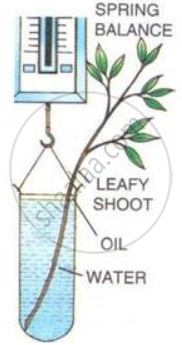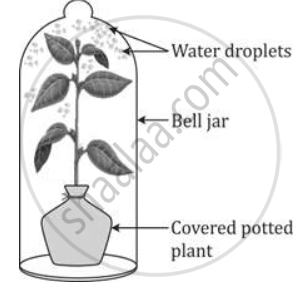Advertisements
Advertisements
Question
The process of evaporative loss of water from the aerial parts of a plant is ______.
Options
Ascent of sap
Translocation
Transpiration
Exudation
Solution
The process of evaporative loss of water from the aerial parts of a plant is transpiration.
Explanation:
Transpiration is the loss of water in the form of vapour from the aerial regions of a plant through the stomata, lenticel and cuticle.
RELATED QUESTIONS
Transpiration is defined as:
Briefly explain, how transpiration helps in upward conduction of water in plants?
The set up shown alongside was kept in sunlight for an hour. It was observed that drops of water appeared on the inside of the polyethylene bag.

- Name the process which is being demonstrated.
- Why was the pot and its soil left uncovered by the polythene bag?
- Why was the pot left in the sunlight?
- Suppose the pot in this experiment was placed inside a dark room instead of placing it in sunlight for some time. What difference will be noticed?
Multiple choice question. Tick (✓) the correct choice:
The loss of water through the stomata of leaves is called
(a) transpiration
(b) wilting
(c) evaporation
(d) osmosis
Differentiate between osmosis and transpiration.
Given alongside is the diagram of an experimental set-up to demonstrate a certain phenomenon in plants.

What is the purpose of the spring balance in the set-up?
An apparatus as shown below was set up to investigate a physiological process in plants. The setup was kept in sunlight for two hours. Droplets of water were then seen inside the bell jar. Answer the questions that follow:

Name the process being studied.
Entry of water into root hair is the demonstration of which of the following process?
Observe the diagram and answer the following;
 (i) |
 (ii) |
- Are these types of guard cells found in monocots or dicots?
- Which of these shows a higher water content (i) or (ii)?
- Which element plays an important role in the opening and closing of stomata?
Define the term Vital capacity.
